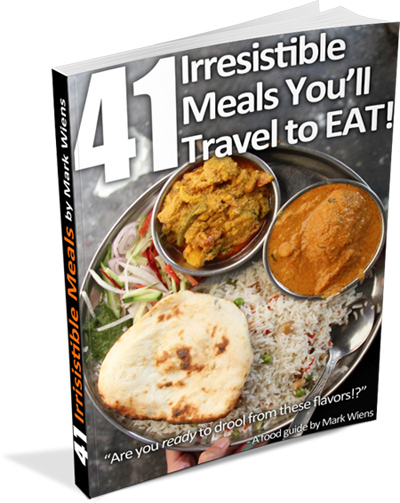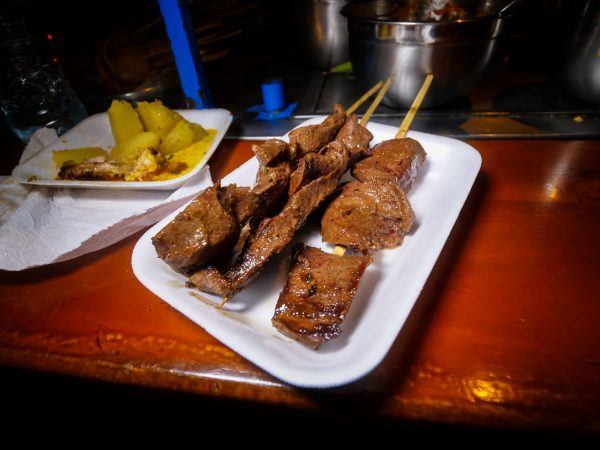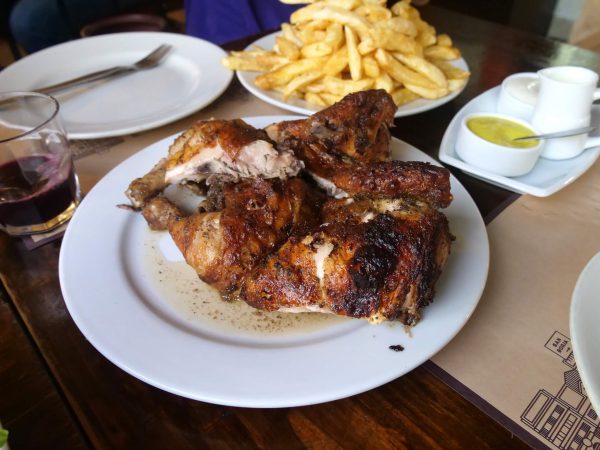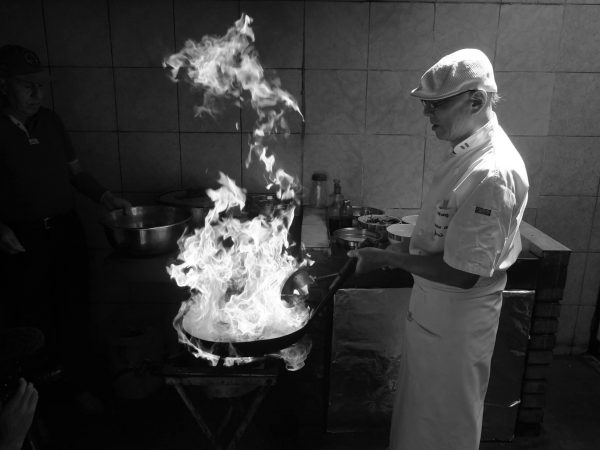
The ancient Incas are one of the most fascinating empires to study in all of our human history.
Most are aware of the gorgeous locations and their centuries long legacy, but how well do you know the food legends that still exist in all these areas today?
In Peru, in the Andes mountains, its now May of 2019. The thing most exciting for us to discover is the delicious and local food history of the Incan capital city of Cusco – so let’s get started right away!
Welcome to The Ultimate Food Tour of Cusco.
In this article, I’ll give you the photos, and all the details, so that you’re ready to plan your own Ultimate Food Tour of Cusco when you’re here – get excited, and get hungry.
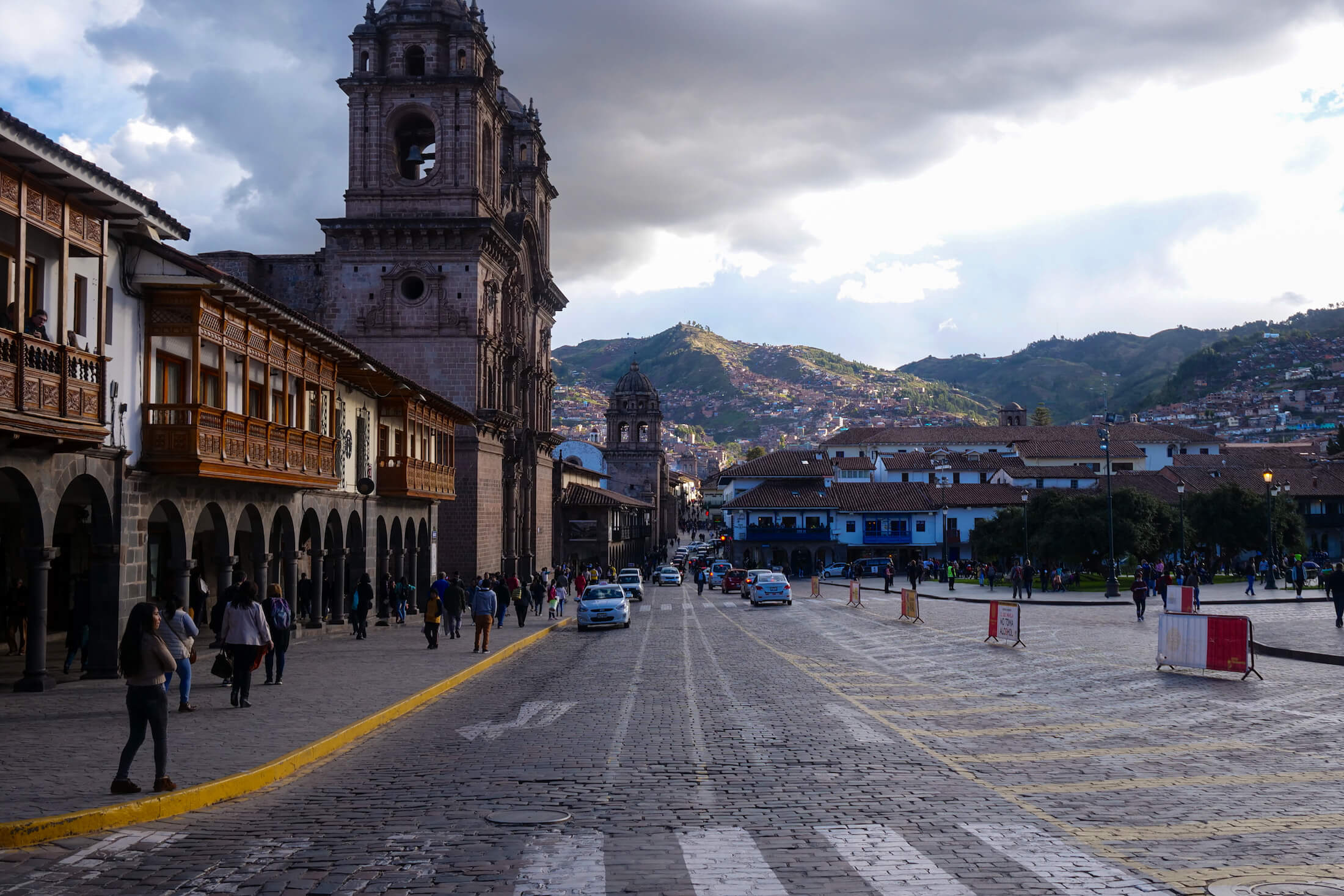
Andes Mountain Cuisine
Spending one day going all out for street food is always one of the best ways to get to know a new city or town.
You have just one day, and you want to eat as much as you possibly can. Do your homework (and let this list be your guide), and you’ll be ready to hit the ground running when you arrive in Cusco.
We have a list of the top 10 things to eat in Cusco (a list we’re making to share), and we aren’t going home until we’ve done the whole list for ourselves!
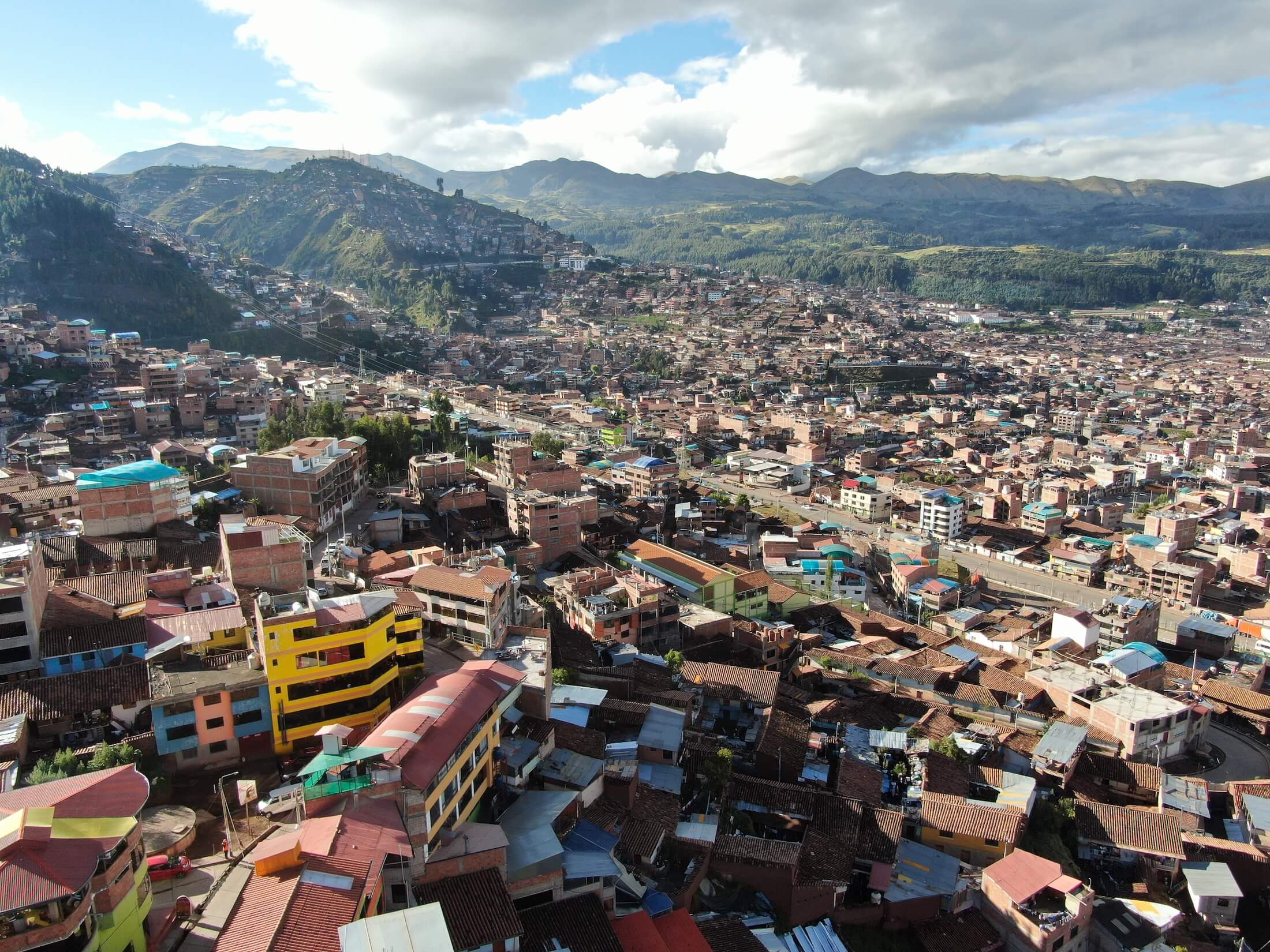
Local Food in the Ancient Incan Capital
The ancient Incas built their capital city in Cusco, and honestly, for years this is a place in our world that I have always wanted to go to eat.
I loved imagining how in Cusco a traveller will not only find an abundance of exotic and ancient dishes (like ‘Cuy‘ or ‘Pachamanca‘), but also a gigantic and gorgeous amount of modern-day delicious local street food as well.
Ultimate Food Tour Tip – Preparation is Key
There are so many things to eat out there, we better get started right away!
If you leave not knowing exactly what order in which to do these, there is a strategy to mastering a day of street food – I’ll share with you some tips as we go.

Quinoa Porridge, or ‘Maka de Quinoa’
A Quick and hearty way to start your day in Cusco is with a thick, sweet, steaming cup of ‘Maka de Quinoa‘ porridge.
In Cusco, you’re starting the day off at a altitude of over 3400 m, so no matter what time of year you come here, its going to be cold in the early morning.
By the afternoon, you may not need your long sleeves anymore, but most days here you’ll want to wake up with something warm to eat.
Quinoa porridge (maka de Quinoa) is one of Cusco’s favorite morning snacks.
Where To Eat This Food in Cusco
The street carts selling Maka de Quinoa are things you’ll see on pretty much every corner of town between the hours of 7-9am.
**Look for steam rising, and lines of people forming, these recognizable food carts usually decorate themselves with green and yellow umbrellas.
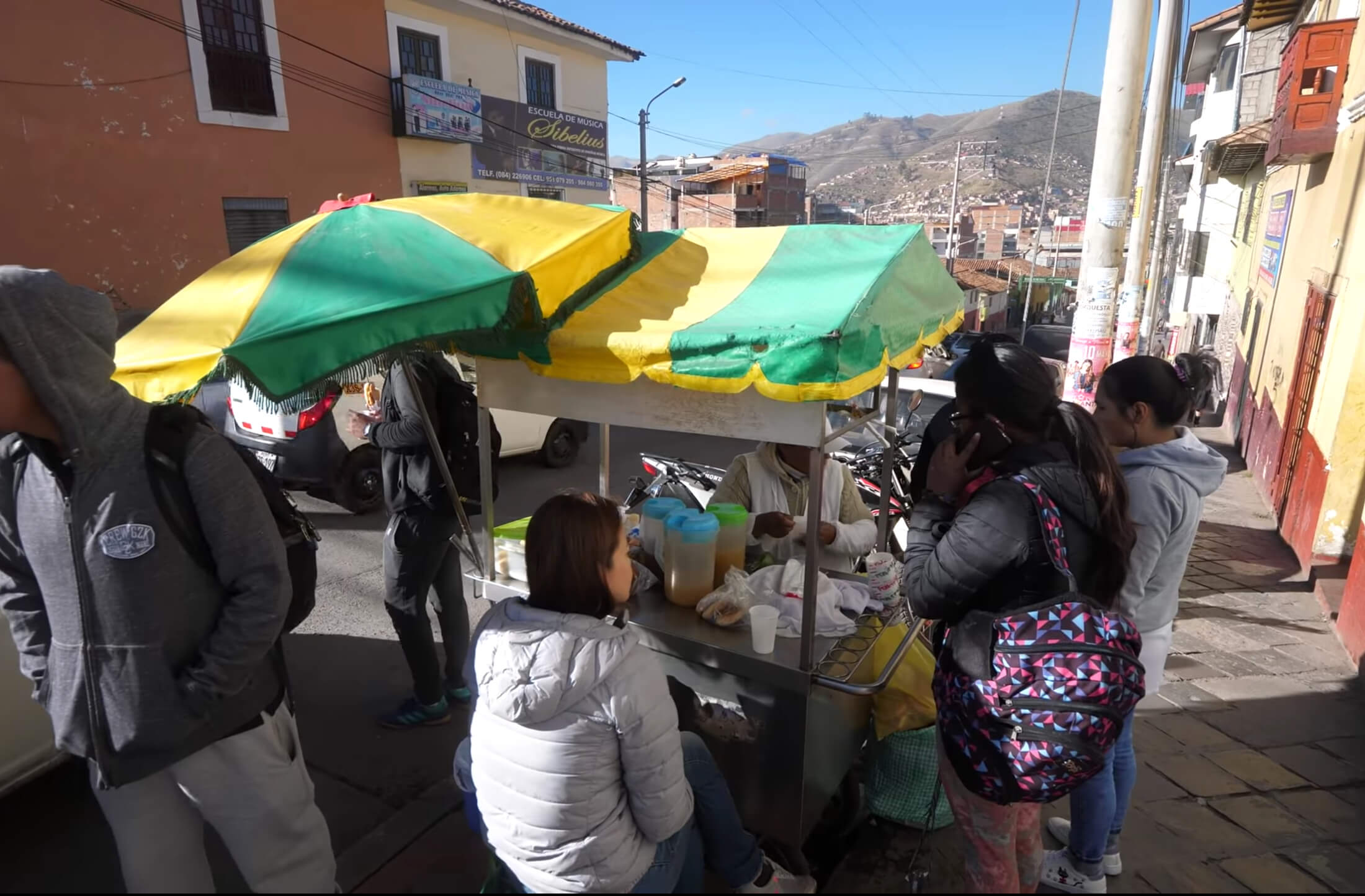
Whats In This Food?
It includes pineapple and apple, a dash of cinnamon, Peruvian ginseng, and local Quinoa grains.
The texture is wonderfully thick – it is a very soothing drink. Its almost like a sticky apple juice, or like an apple-only smoothie. This was a great first taste of Cusco, and I we immediately ordered one more of each option to go.
Other Things to Try Here
You can also try cups of plain ‘maka’ here, which in English is ‘Peruvian ginseng.’ Its also warm, very healthy, and most of the people I see ordering here have it with very simple snacks of bread (2 pieces of bread for 1 PEN).
These carts have tons of different options, so feel free to pick and choose until you perfect your own favorite Cusco-morning beverage (and please tell us about it in the comments section below!).
Name: Maka de Quinoa
Hours: Morning hours, all around Cusco
Price: 1 PEN per cup.
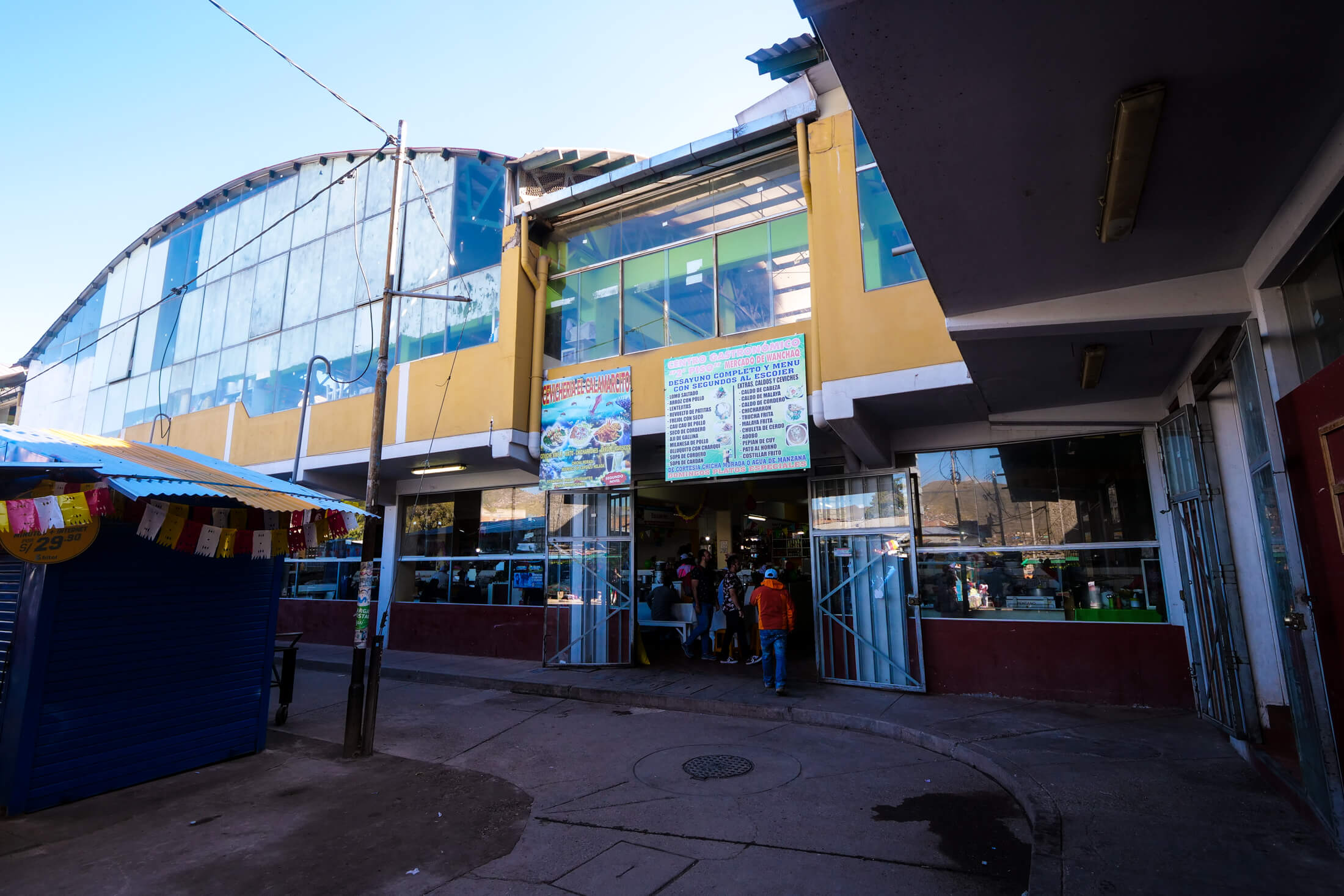
Wanchaq Market in Cusco
A local market always has to be somewhere near the top of every street food list, and we’re wanting to go right now in search of a high mountain stew of “Chairo.”
Walking through the Wanchaq market, you will get hit with plenty of fresh and cooking smells, but none of these scents are as recognizable as the Peruvian black mint, “huacatay.”
A key ingredient in many of Peru’s best traditional foods, if you haven’t had Andean roast guinea pig yet, then remember this wonderful smell for later.
Pro Tip: Pick up a few fresh, raw Rocoto chili peppers as you walk along. Look through some of the vendors’ fresh selection, and grab a few chilies to bring along for a snack later on. The Wanchaq market is full of fresh fruits and local foods, and there’s open seating in the building floors upstairs.
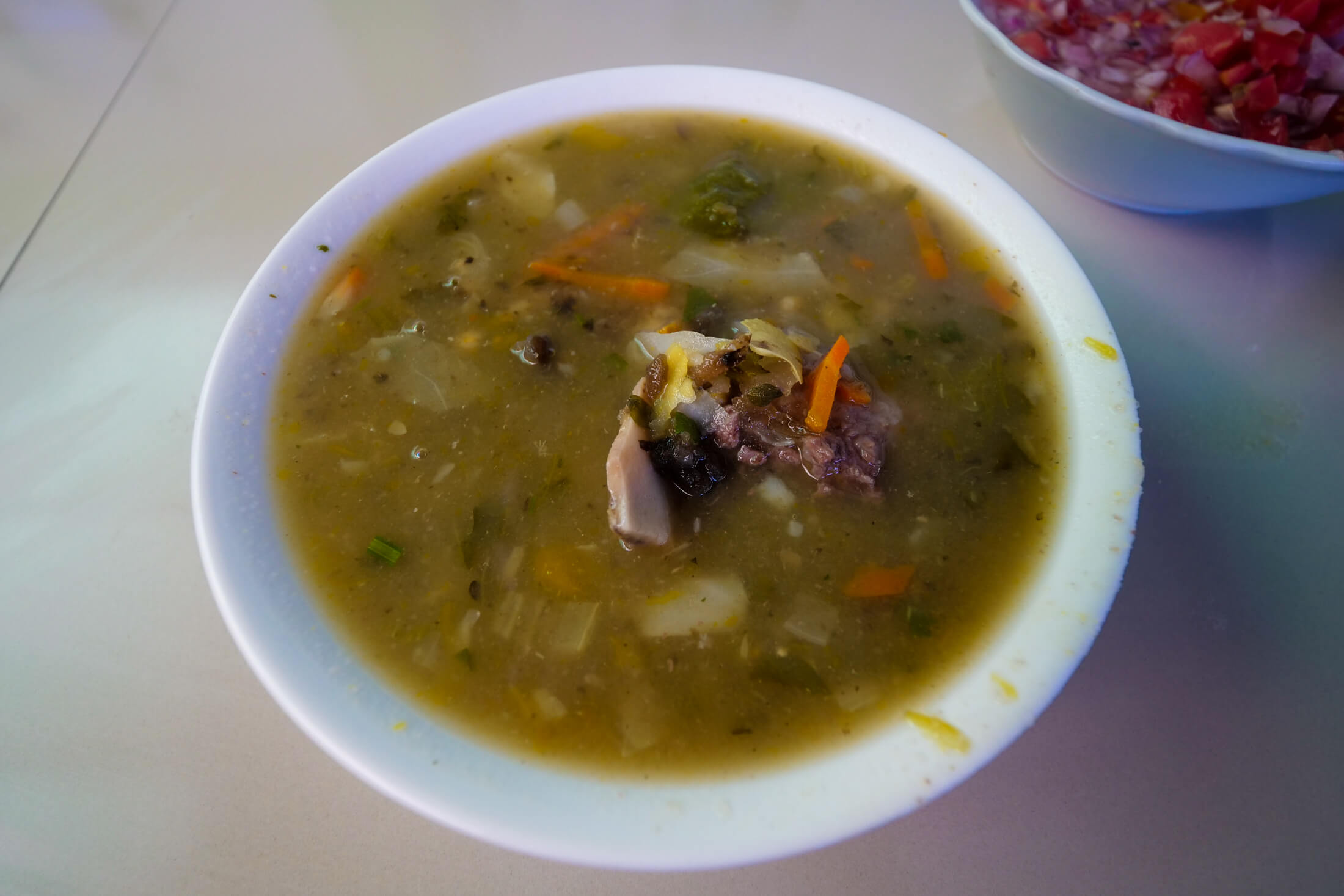
Chairo (Potato and Lamb Stew)
This is a high mountain soup, this is how the people of Cusco are filling their bellies on any weekday morning before work.
Of all the things that local friends from Lima recommend, you are sure to hear the words “visit the Andes regions, and find a soup called ‘Chairo.’
Finding it upstairs in the Wanchaq market, you’re looking for either a written sign, or a huge pot of steaming soup, with lines of people smiling and slurping.
What’s in Chairo?
Chairo is an extremely hearty stew, full of potatoes, corn, carrots, cabbage, and even barley grains.
The main ingredient in this soup though, is one of the most interesting things in all of Peruvian cuisine.
As soon as you taste your chairo stew, you’ll immediately notice a unique consistency. The naturally freeze-dried potatoes are a creation of Incan ingenuity, they dissolve in the hot water, rehydrating to make this hearty dish.
These potatoes are ‘moraya‘ here, and chairo also usually includes meat as well (our’s today is with ‘cordero,’ lamb meat). There are many other ingredients to add in as well, I can guarantee you’ll love this food.
Bonus Addition: Add in a few spoons from the accompanying salsa-type salad to really bump up the spice. Its full of red onions, red tomatoes, and limón juice (local citrus), and fresh Rocoto spicy peppers.
Name: Wanchaq Market (Mercado de Wanchaq)
Hours: Open daily, 6am-6pm
Price: 3 PEN (US$0.95) per bowl of Chairo.
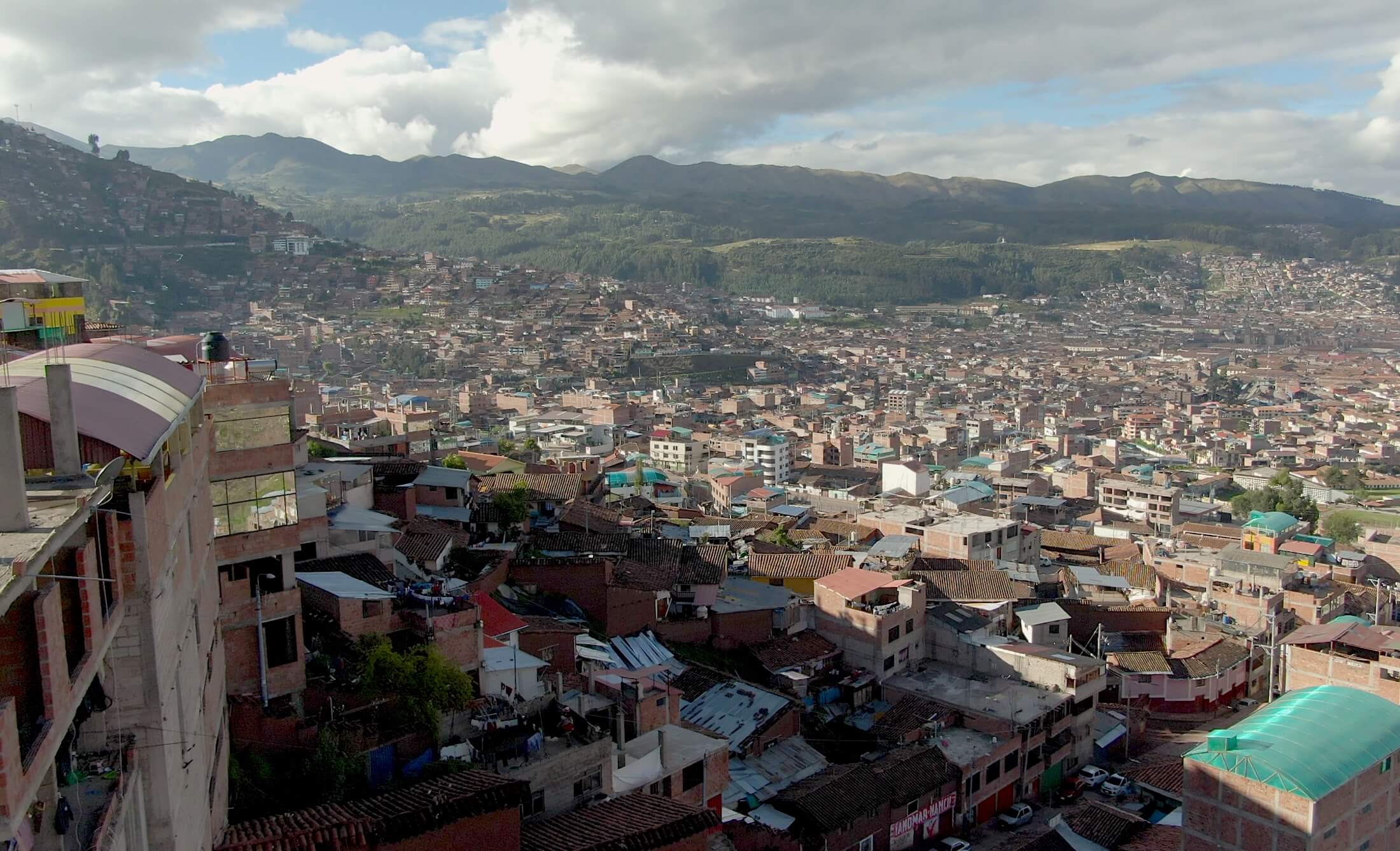
Street Carts in the Cusco Hillside
If you take a trek to any of the Sacred Valley sights outside of Cusco town, you may notice the large amount of street food carts along most of Cusco’s outer main roads.
Lines of people crowding around tiny awnings is always one of the best signs when you want delicious local dishes, and this is exactly what we’re looking for today.
Get exclusive updates
Enter your email and I’ll send you the best travel food content.
Great places to look are outside fresh markets, next to bus stops, or other points of local transit. We are heading to explore the area near San Isidro neighborhood (map info down below).
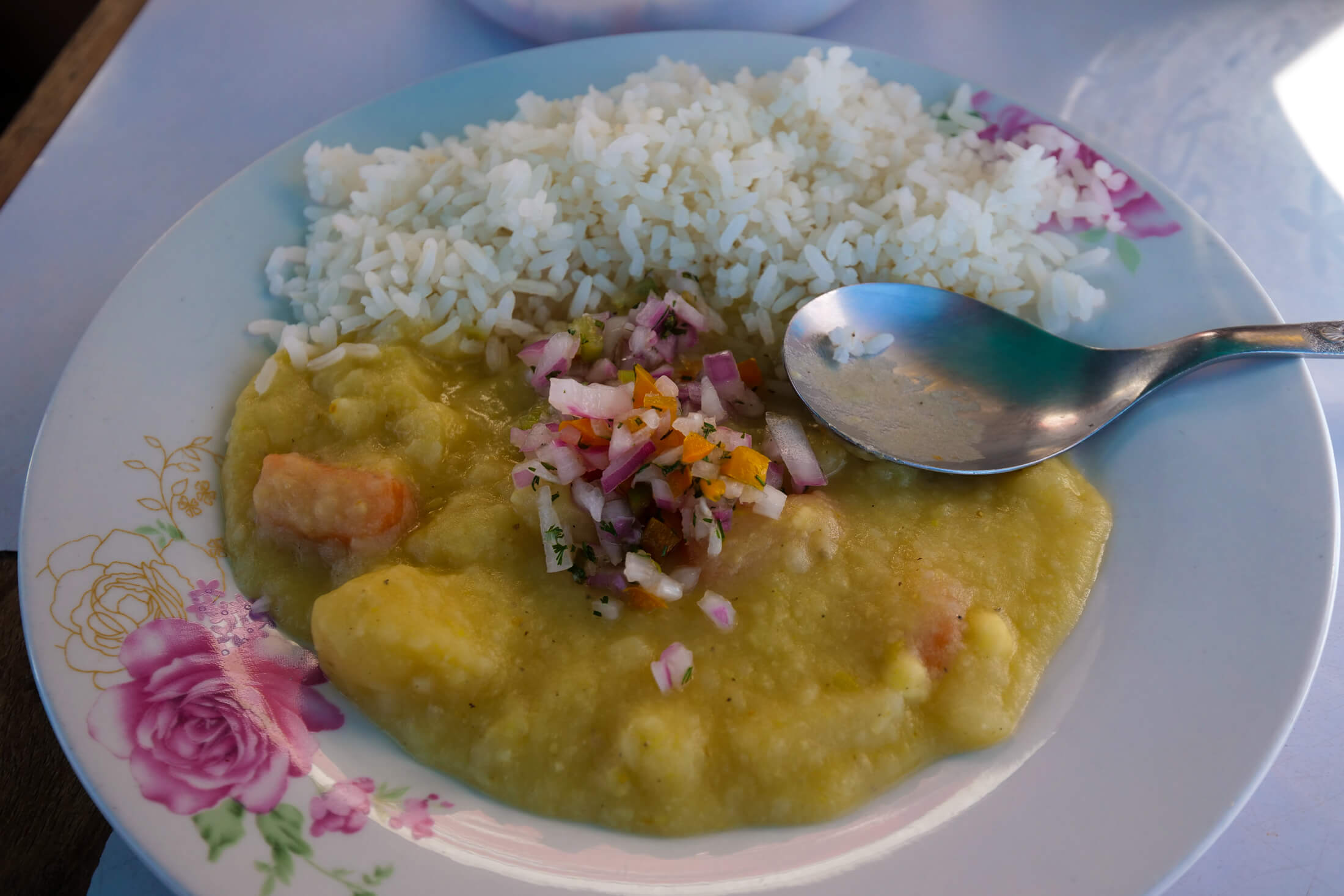
Kapchi de Habas (Broad Bean Stew)
You’re going to want to have at least one or two meals of countryside local food (or get as close to it as you can), and simple plates like this tasty meal of “Kapchi de Habas” are near and dear to the heart of Peru.
Including Fava beans, potatoes, and cauliflower, “habas” are the fava beans (also known as ‘broad beans’).
The flavor of this stew-like mix almost makes you think that there is cheese in it as well, but the recipe includes local mushrooms, as well as milk, which is what gives it a cheesy aftertaste.
In This Food – A Satisfyingly Simple Recipe
So many of the main meals you will have on the streets of Cusco will tend to fit the same purpose – a hearty dish of high mountain produce, cooking in a way that makes it cheap, yet very filling and satisfying.
Many of the recipes center around potatoes, as this is actually the home of potatoes (they are native to this region).
You’ll eat this meal with white rice, and again don’t forget to add at least one healthy scoop of the sour salsa. Its a spicy, vinegary mix that comes in a small dish on each table – its crunchy, a bit spicy, and excellent.
Name: Kapchi de Habas
Hours: We found it near a bus stop near the San Isidro neighborhood of Cusco
Price: 4 PEN per plate (US$1.33), which includes her home-made Maka Tea.
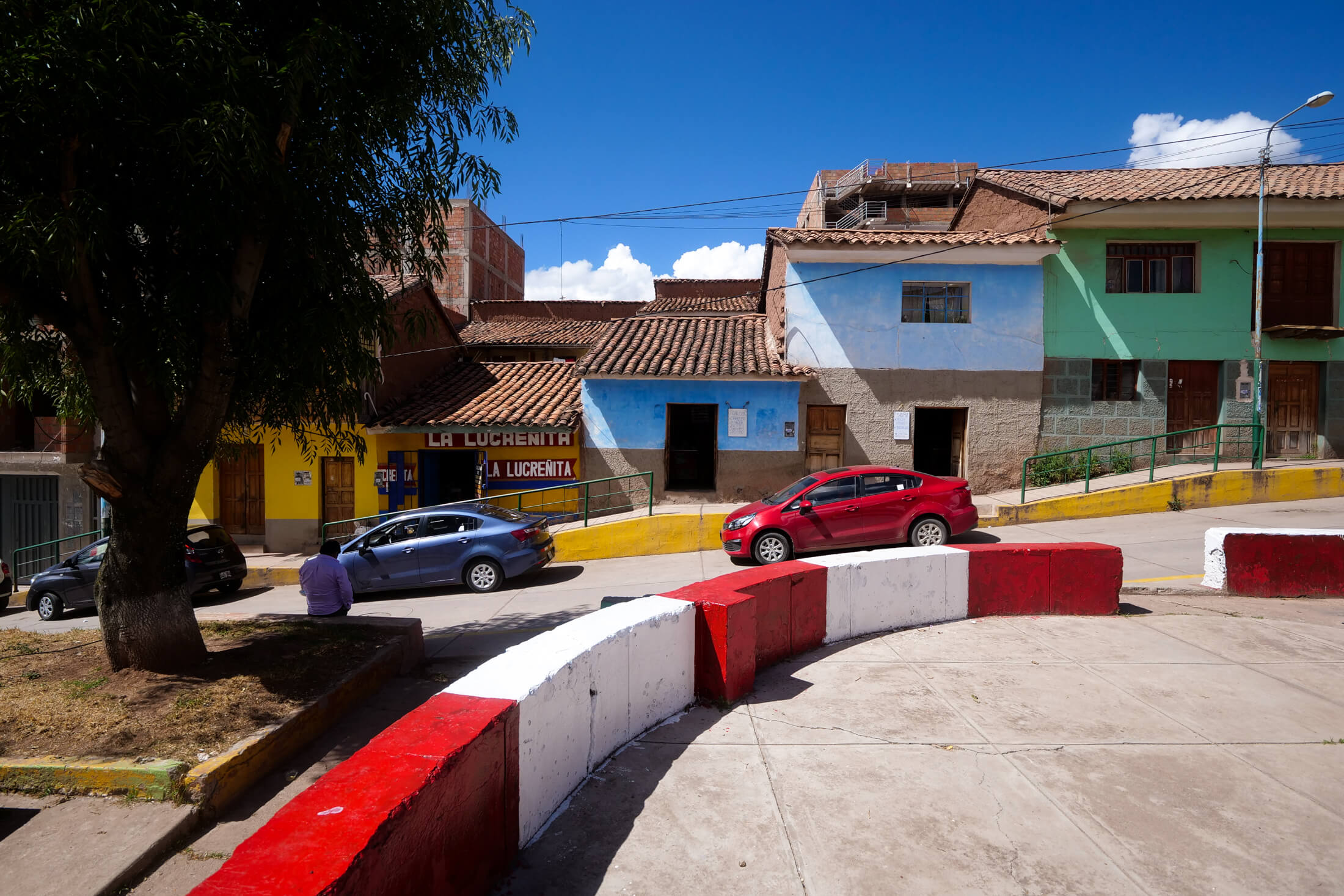
Adobo (Corn Beer Soup with Pork)
Heading directly to part two of our local neighborhood breakfast, our new friend and driver for the day Raul, takes us straight to an absolute winner of a restaurant.
The restaurant has no name, but he recognizes what the restaurant serves by noticing just a menu hanging outside the door.
Adobo is the name of the dish we want to have, and this tiny restaurant has the markings of everything you’ll want and more.
I had a hunch that we were in the presence of greatness, as the welcoming meaty aromas were unlike few I’ve ever experienced!
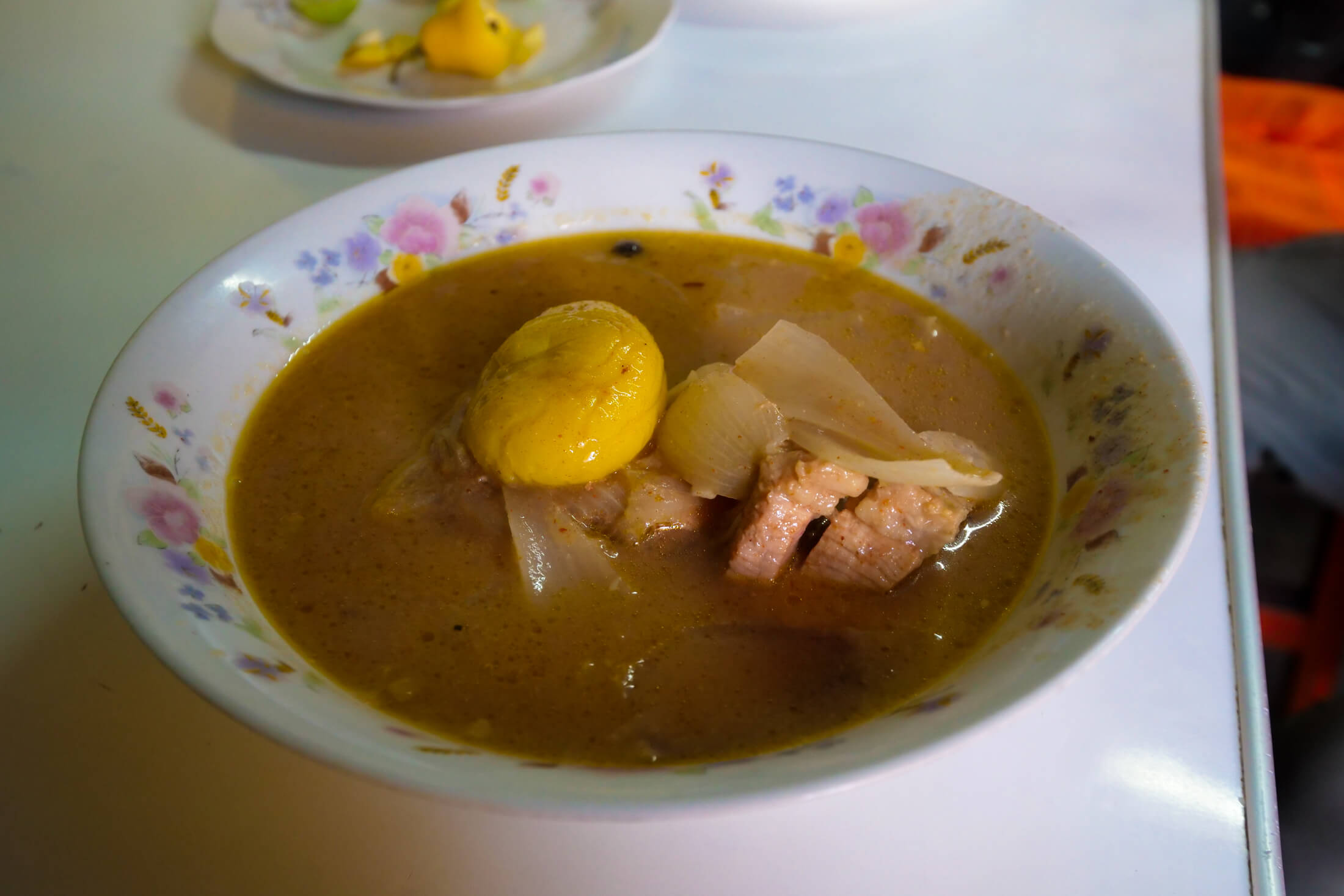
The Most Meaty Welcoming Aroma…
You cannot leave Cusco without trying a bowl of Adobo, it is simply and truly a stunningly tasty pork soup.
The main ingredients of Adobo are just pork and chicha corn beer, but the depth of flavor in every spoon of Adobo is just so impressively thick.
Her Recipe for Adobo is Amazing!
Our version today also comes with chunks of onions, an entire pork chop in each bowl, and entire rocoto chili peppers that cooks right in the huge soup pot as well.
Adobo at this restaurant is just so meaty, and its easy to understand why it feels like a meat sauna when you step inside the single room.
I can only wonder how many hours it takes to create the sauna-like environment into which she’ll welcome you too…
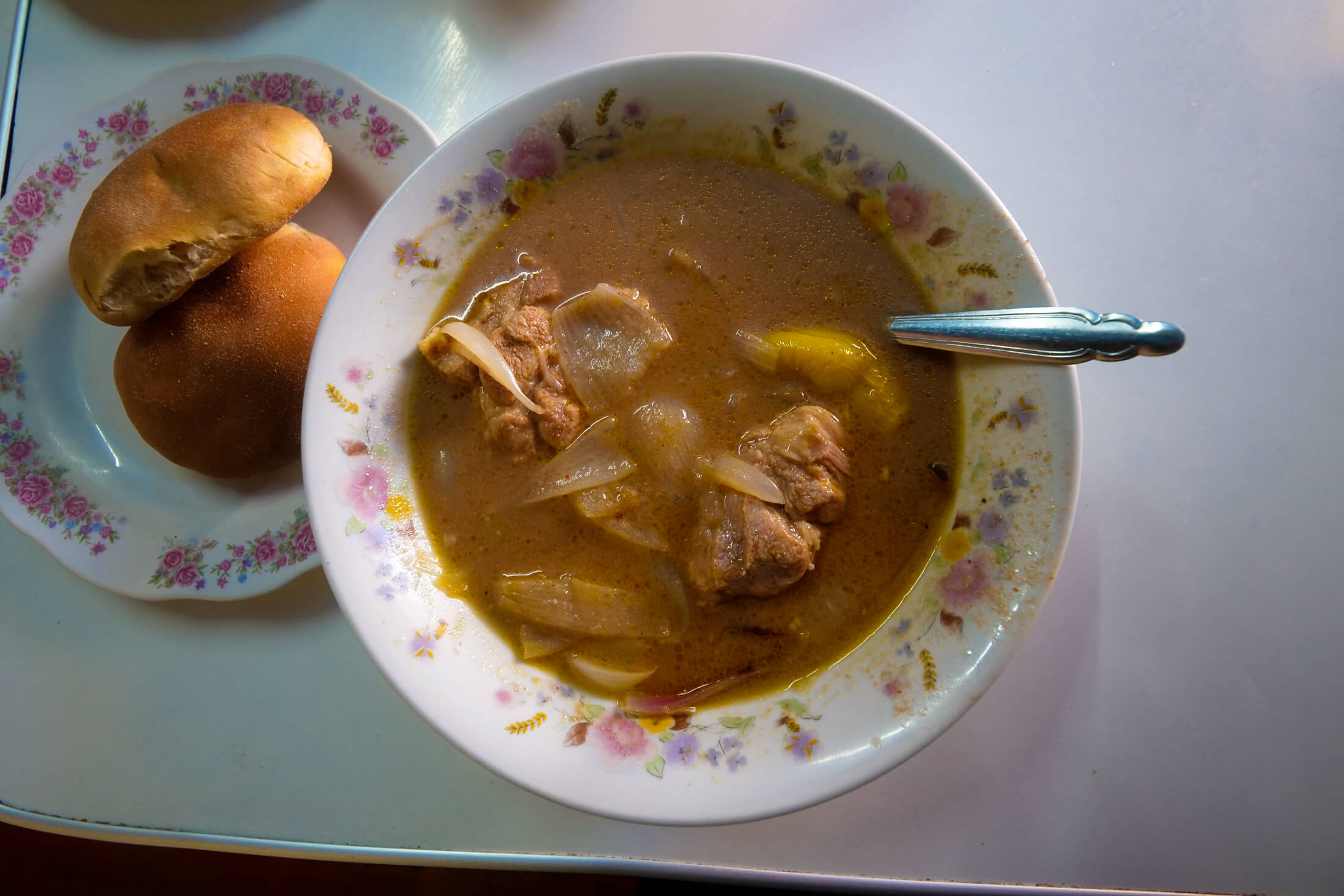
A Little Back Story
Finding such tiny and local places like this can be difficult at times – and we have to be honest today – without the help of Raul, we would have had little chance finding Adobo at such a perfect place as this.
A huge thanks to Raul, for his hard work, and for joining us for all the meals!
Beware of Gifts Named ‘Rocoto’
The chef at this restaurant was slightly unsure at first, when she looks up to see us taking photos outside her front door. When she notices how much we love her cooking however, she warms up, and rewards us with a couple of delicious surprises.
First, a fresh Rocoto chili pepper, which will nearly blow anyone’s head off (flavorfully fruity, and towering chili heat, these peppers are amazing). Second, a small shot glass of pisco and anise-seed alcohol (for health), one for each of us, all from a large bottle that she makes herself at home.
Such a delicious way to finish the meal, and this is one that’s definitely over too quickly.
**I can easily say that her Adobo is one of the best versions in all of Cusco, and this meal is one of my favorite and most memorable from this entire trip to Peru.
Name: (The restaurant had just a sign in front) Adobo is the name of the soup.
Hours: We came here in the late morning
Price: 11 PEN per bowl (US$3.33)
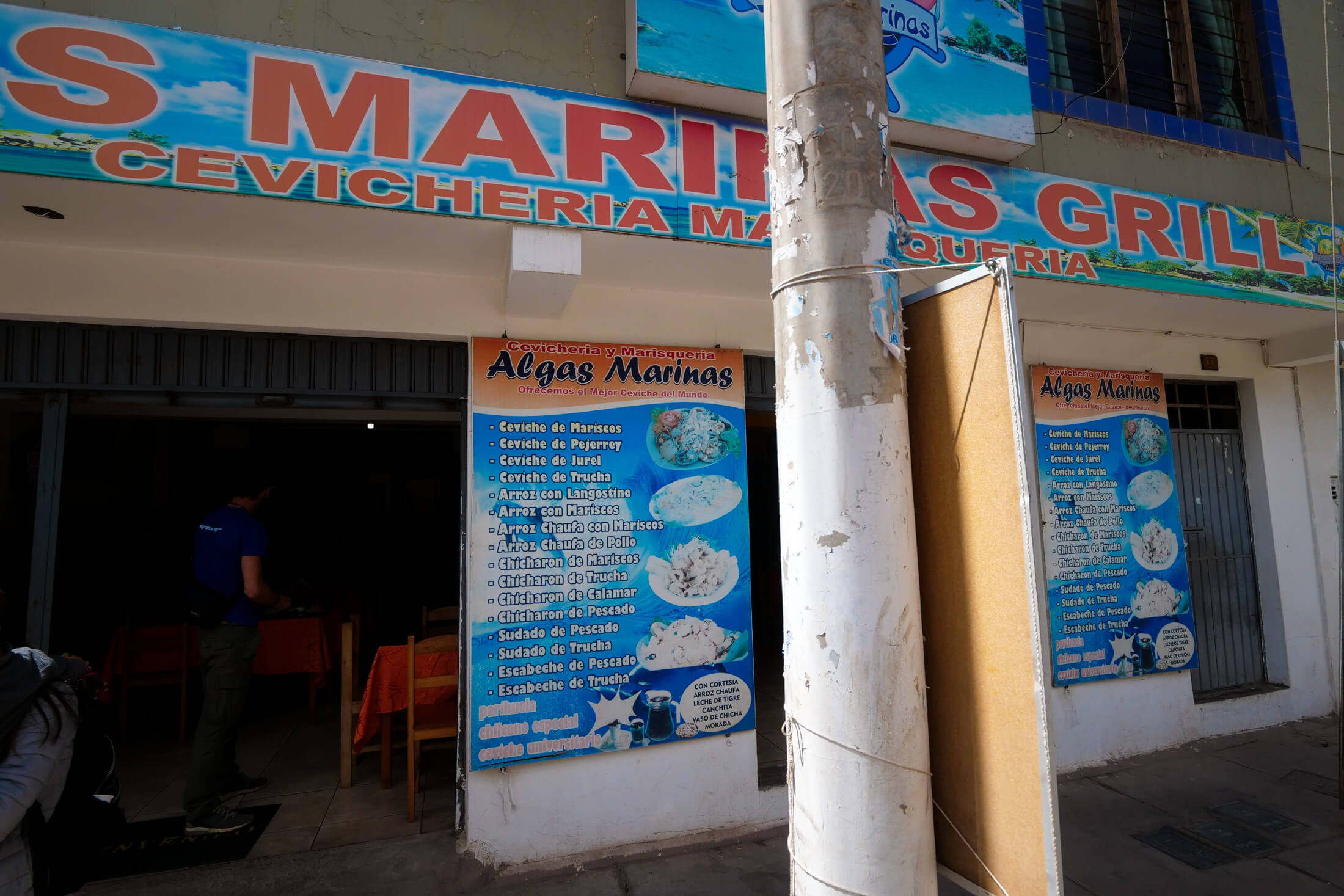
Andean Freshwater Ceviche
If you’re spending any time in Lima, then I am sure you are eating your fill of the world’s best Ceviche.
However, of the huge number of ways that Peru eats this dish, you have to know that some of them are only available here in Cusco.
Ceviche chefs are usually famous for using saltwater fish, especially in the capital city of Lima, as it is so close to the Pacific coast.
Up here in the mountains though, there are fish in all the lakes and streams, and one of Peru’s favorite dishes is also loved by people in the Andes as well.
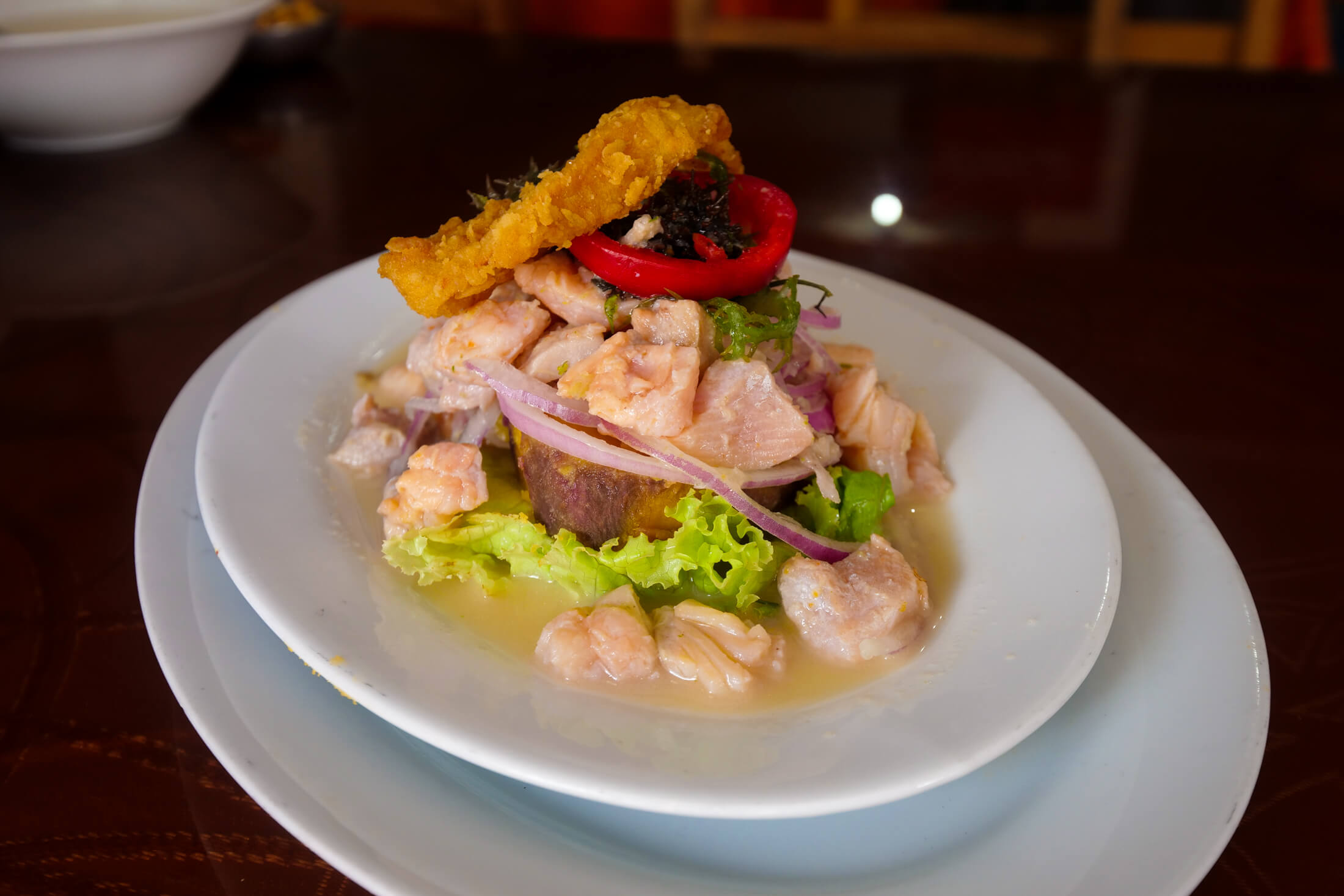
River Trout
The name of this dish is “Ceviche de Trucha,” or ceviche with trout.
These trout come from the high mountain rivers, and have such a different and unique taste, to go with the standard bitingly sour flavor profile that all ceviche-lovers know.
You’re going to want the raw version, specifically what you see in the photo above, as you can really taste both important parts of ceviche. Not just the pure flavor of the simple fish drenched in all that lime, but you can also get the soft texture of the raw fish meat.
The Recipe for Cusco Mountain Ceviche
I love the presentation of ceviche, no matter where you are in Peru. The colors are always beautiful, and chefs take pride in arranging the various ingredients so that you can always see all of what you’re eating.
This dish of ceviche at Algas Marinas is basically one of building blocks of food, starting with a huge chunk of sweet potato in the center, and long strips of red onions encircling the orange potato base.
Resting on top of the sweet potato are the thick chunks of trout meat, beautifully pink in color but you can tell from the texture that they have been bathed in lime juice and vinegar.
The trout ceviche is just a wonderful dish, and a great part of this Ultimate food tour of Cusco.
Name: Algas Marinas (Cevicheria) (location)
Hours: No Hours posted, we went for lunch
Price: 15 PEN per lunch combo (one combo is a lot for 1 person).
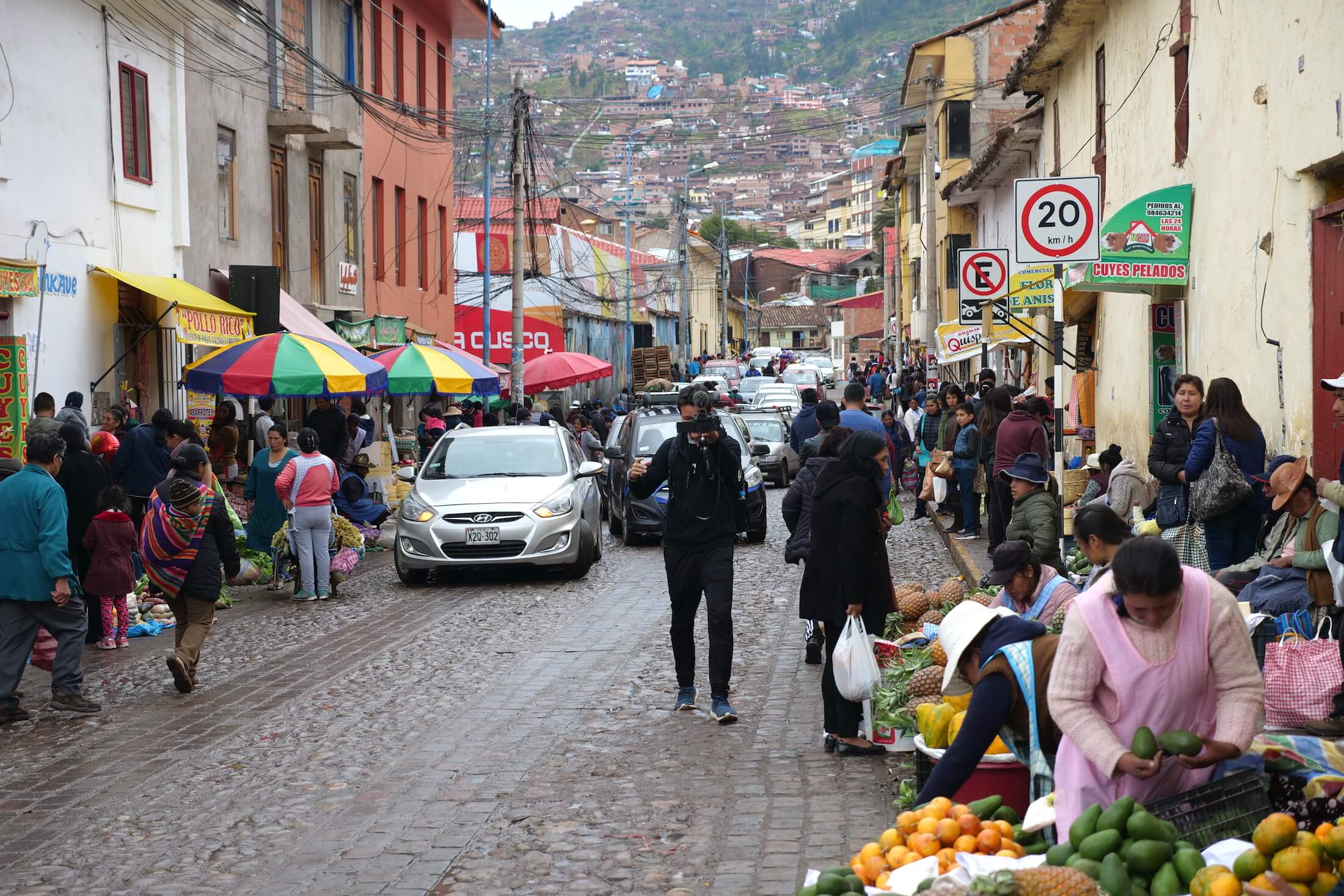
Back to the Market
Now into the second half of our ultimate food tour of Cusco, we want to head back into town, and visit a fresh market area for more food.
Cusco is quite a large town, so you will find that the street food options are constantly changing throughout the day.
With so many people here wanting to eat their favorite local foods, you can find examples of pretty much any dish you want, if you’re willing to look hard enough.
Your Self-Guided Food Tour Tips
I have to say another big thank you to our friend Raul, but you can also use this as an example when making your own food tour as well – we had very little idea of where to find these foods, all we had was basically a long list of names (do your homework before you go on the trip).
When you arrive, try to make a few local friends, ask for tips, or use online resources to help you find what you’re looking for (we have to say a huge thank you to Google Maps).
Take some time to prep, to map things out before you go, and with a little friendly luck along the way, you’ll be all set when you’re finally at your destination.
Honestly, besides the obvious prep work, the final thing is to just GO, walk out the door and BEGIN. Put yourself in the kind hands of Peruvian food lovers (which we found to be basically everyone), and when they see how much you want to learn about their food, they’ll be more than happy to show you the way.
And now, on to the next stop – the central Cusco market!
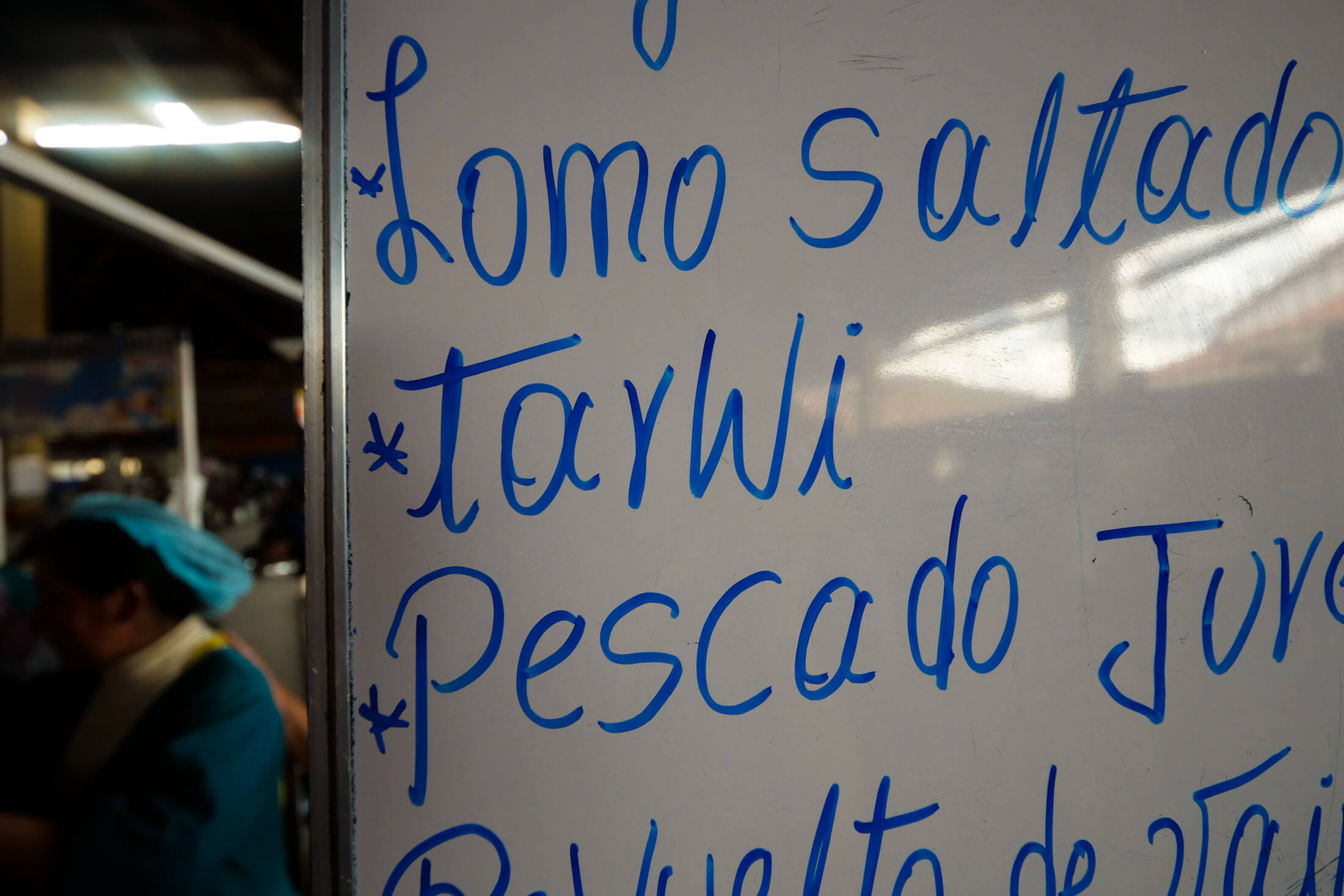
Lupini Beans (“Tarwi”)
The high mountain areas of Peru are just full of single foods that are simply ultra-dense in nutrition. For thousands of years here, people have been surviving off of quinoa, amaranth, inca berries, and many types of beans.
These lupini beans (“Tarwi”) are full of protein and vitamins, and have given sustenance to Peru’s people since before the time of the Incas.
There’s only one problem with eating them though – they’re quite poisonous if you eat them raw.
Preparing them first by several days of steaming and drying, chefs will then mash the beans to mix with a ton of other ingredients and seasonings.
Tarwi is this food that we want to find next on our tour.
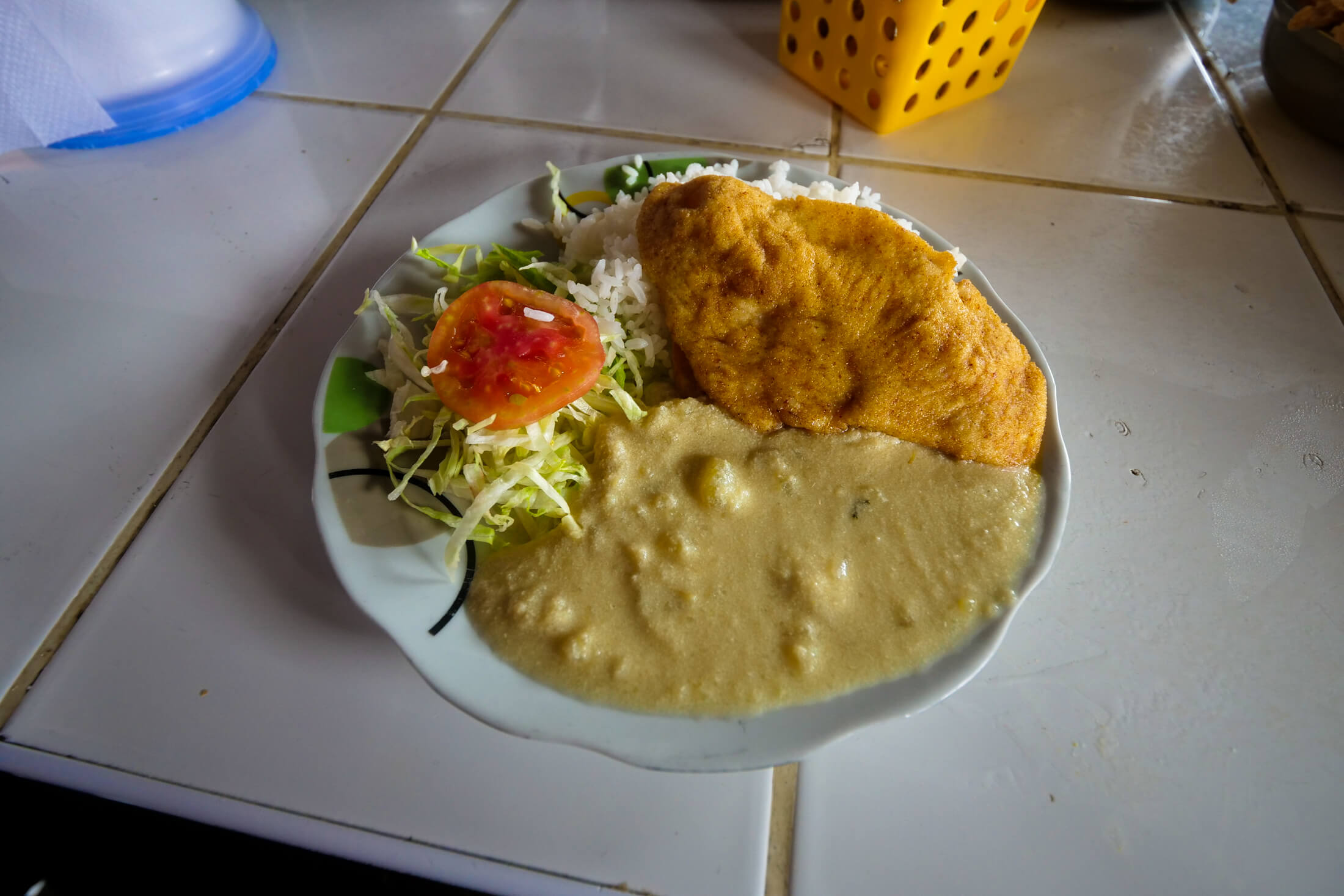
Tarwi con Milanesa de Pollo
Trying the Lupini beans for the first time, there is a definite nutty flavor to them. Slightly dry, although its made into almost a stew in consistency, you can still feel a dryness from the beans.
Most information says that you must cook them for days to get rid of the strong bitterness, but I like the hints of bitterness that still come through. Only slightly bitter, and you can definitely tell that the chef adds huacatay mint into the recipe as well (you can taste the anise flavor in each bite).
Tarwi Lupini beans pair nicely with a chicken cutlet, and this entire plate today is 5 PEN (US$1.60).
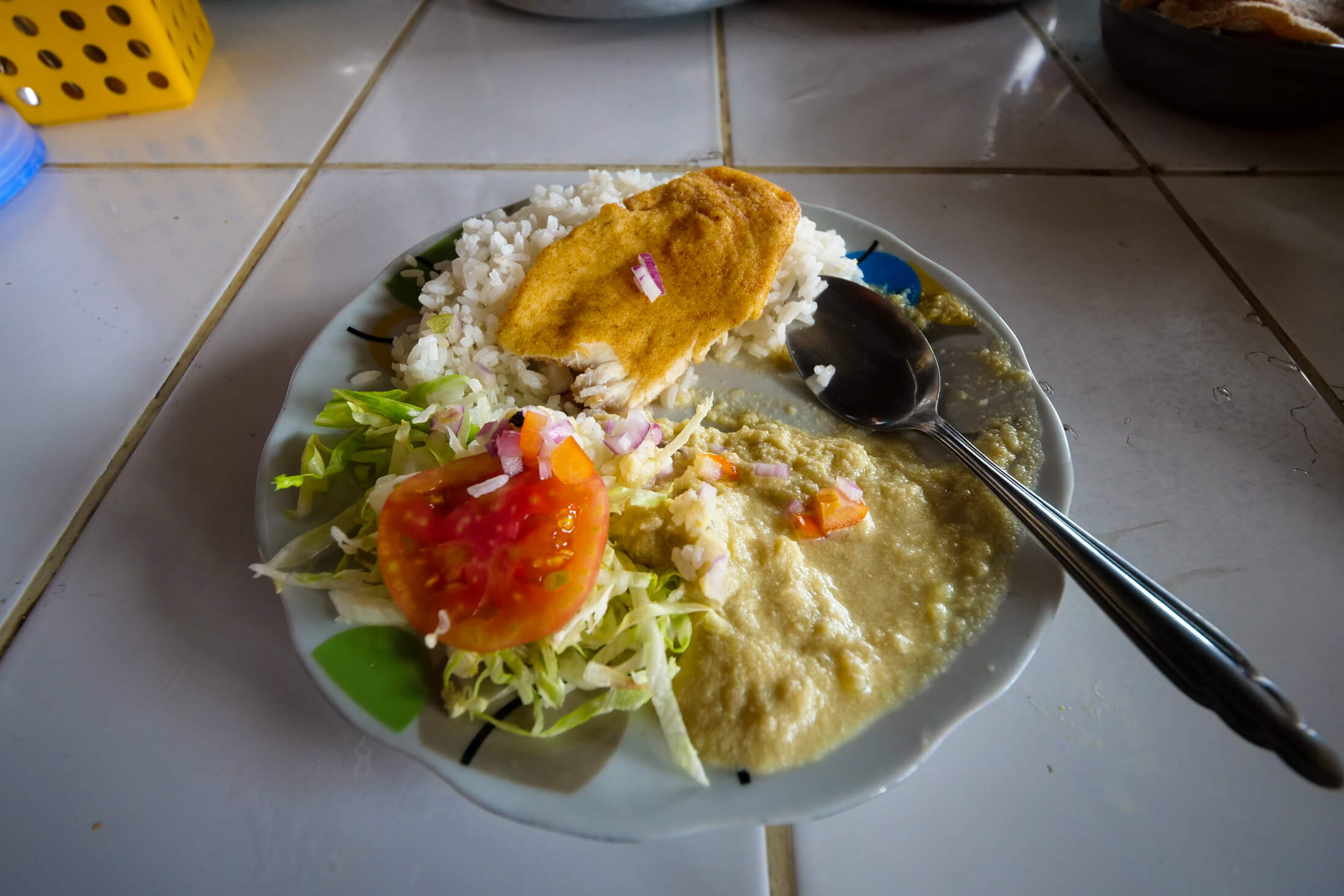
San Pedro Market for Local Meals on a Budget
In the San Pedro market you can eat great local food on a budget – most plates we see are 5 PEN each (US$1.60).
This place also has a great atmosphere for some serious mid-day lunching, we couldn’t wait to try several new foods here.
Walking down to the end of the market there’s a food court, and when we see the name ‘Tarwi’ on a menu, we immediately sit down to order.
Currently Popular, yet Truly Ancient Recipes
These beans are becoming a more common ingredient in meals of Peruvian street food now, all over the country. In the past, foods like this may have been seen to be only for working or lower classes of people, and were difficult to find in the larger cities of Peru.
You can even find ceviche made with Tarwi now though,* as more people are realizing that these beans are both healthy, and delicious.
*(ceviche refers to the style of preparation, it is not the word or name for sour fish/raw fish)
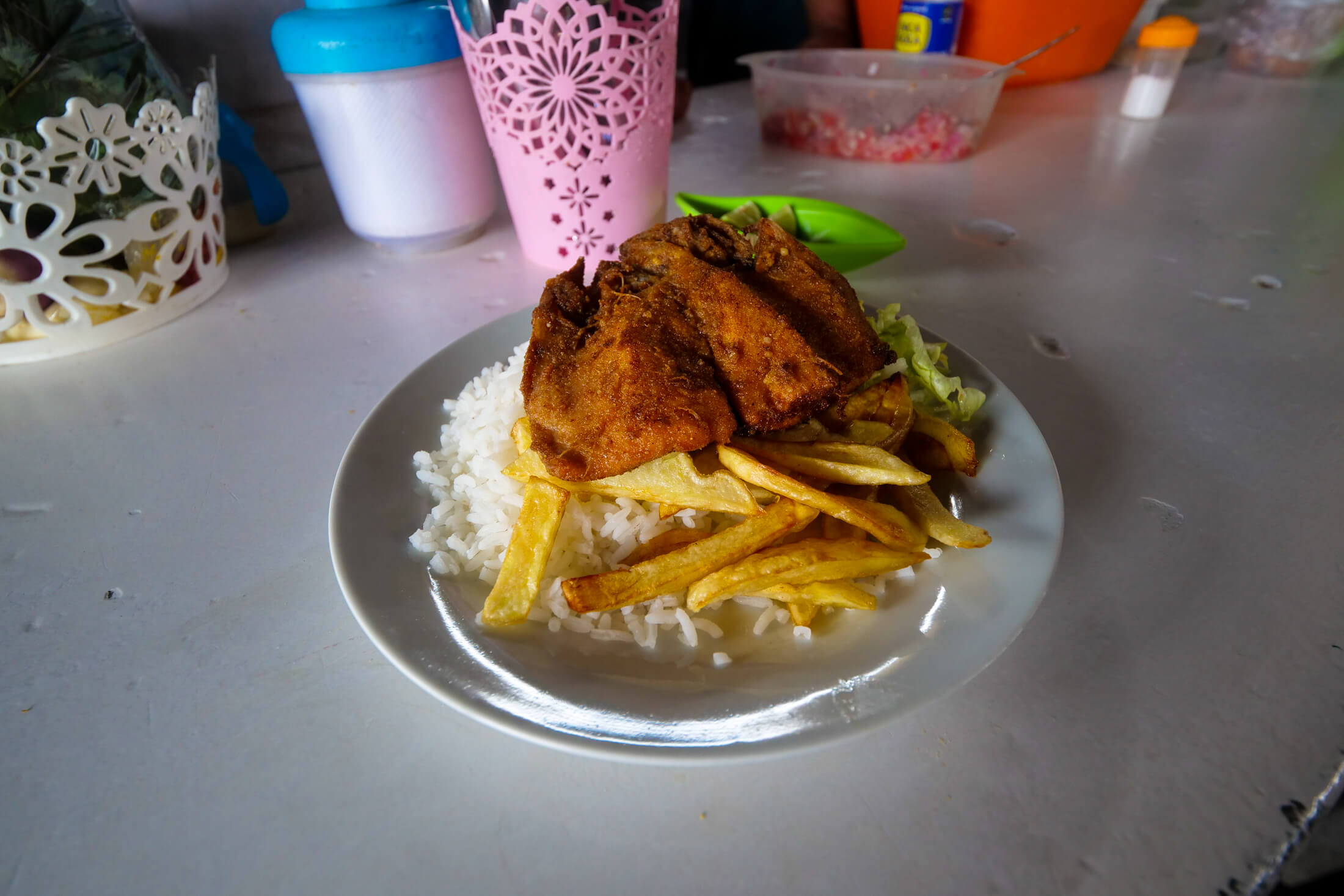
‘Trucha’ Trout over Rice
There are quick-order menus hanging everywhere, and its so fun to just pick one new food after another here – markets like this are like an adult foodie’s playground.
The food here is so good, this situation definitely deserves a Part 2.
Walking directly next to the first food court table, we notice another pair of motherly chefs frying some Peruvian river trout (‘trucha’).
Just judging on the color and the freshness of ingredients alone, you know this is another dish you just have to try.
Nicely Fatty, Clean Flavors
Like the trout ceviche earlier today, the flavor of the fish meat is just so clean and fresh. Even though its frying in oil, you can still taste the nicely fatty and yet gentle flavor of the trout meat (almost like salmon, although this is a freshwater fish).
Chase each bite with a french fry, and don’t forget to scoop some of the vinegar, cilantro, and red onions onto your pile of white rice.
Pro Street Food Move
If you did happen to pick up a few fresh Rocoto chilis out from the market earlier this morning, now is the time to taste them.
Whenever you think you’re ready, mix a spoon of trout, rice, and bite into the base of a ripe Rocoto chili. To warm up, go for the tip, and if you’re in the mood for serious chili action, go straight for a mouthful of black seeds.
You should be sweating, and grinning widely (possibly even flying) by the time you’re ready to put down your fork and spoon.
Name: San Pedro Market Stalls (South Section)
Hours: Open 6am-6pm Daily
Price: 5 PEN per plate (US$1.60)
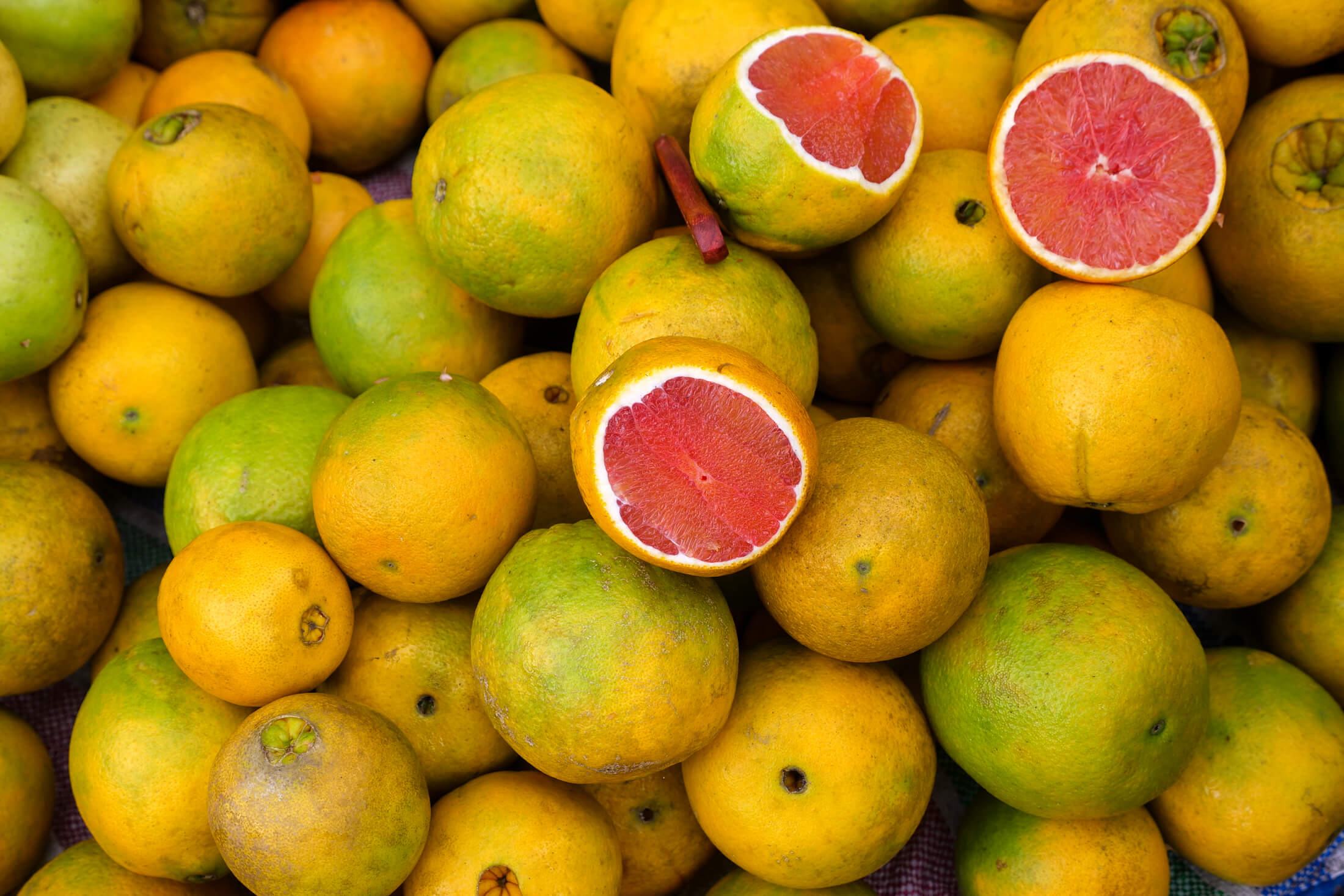
Such Diversity in the San Pedro Market
Arriving at the main entrance of the San Pedro market, you can’t help but notice how the market tables are just full of fruits and foods from all around Peru.
Having a long coastline, but also many parts of the country at such extremely high elevations, Peru really has such diversity, and such a massive amount of local fresh produce.
You you really could spend hours just wandering around the San Pedro market, taste testing and sampling, and also buying handicrafts or souvenirs to take-home.*
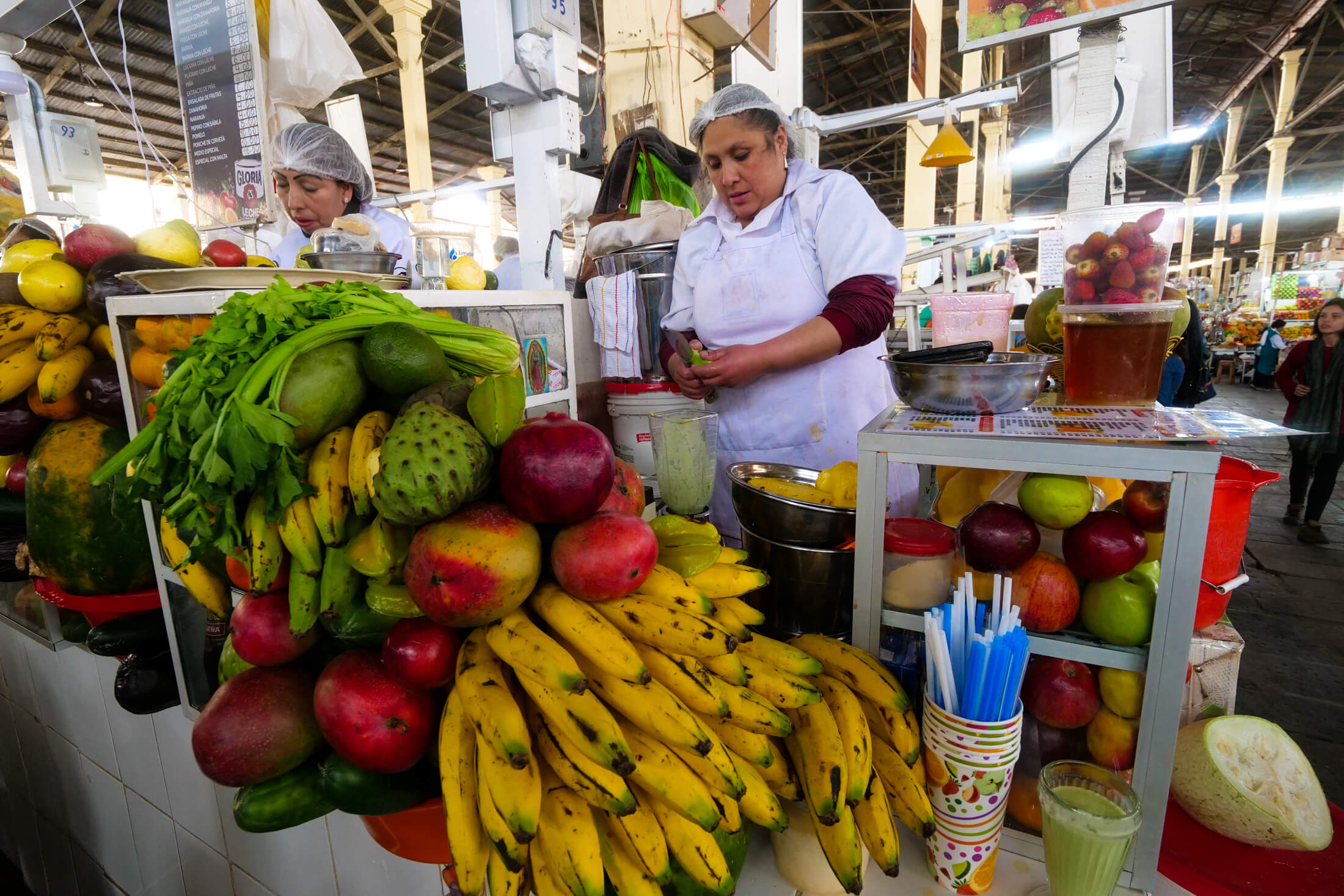
Mountains of Fresh Fruit
Across the main aisle, nearly overflowing into one of the aisles, there are several entire mountains worth of fresh fruit. There are about a dozen or so ladies there selling fruit smoothies, fruit juices, water, soda, and even local beer.
This is the perfect thing to give at least the smallest bit of balance to all the meat you’ll probably be eating today.
If you did eat an entire Rocoto chili all to yourself just now, then these shakes are some delicious fire management in a cup.
*Just remember to finish off ALL the coca leaves you might buy here BEFORE you leave Peru!

Mango and Avocado Smoothie
Most of the selections here are 6-8 PEN per large cup (US$1.70-2.30), and she will give it to you in a paper cup to go, or a beautifully heavy glass if you want to just enjoy the smoothie right at her stall.
Our orders of mango and avocado taste great without even adding sugar at all, and the ladies here are so friendly.
You might have a hard time deciding though, because all the ladies are so friendly here – do your best to just smile, and choose quickly, and sit down to prepare yourself for a few final rounds of street food.
I am sure you will love the fruit here in Cusco as well, and if you’re curious about the fruit, you can see one of the most massive fruit markets on earth right here (link), we visited during our street food tour of Lima a few days ago.
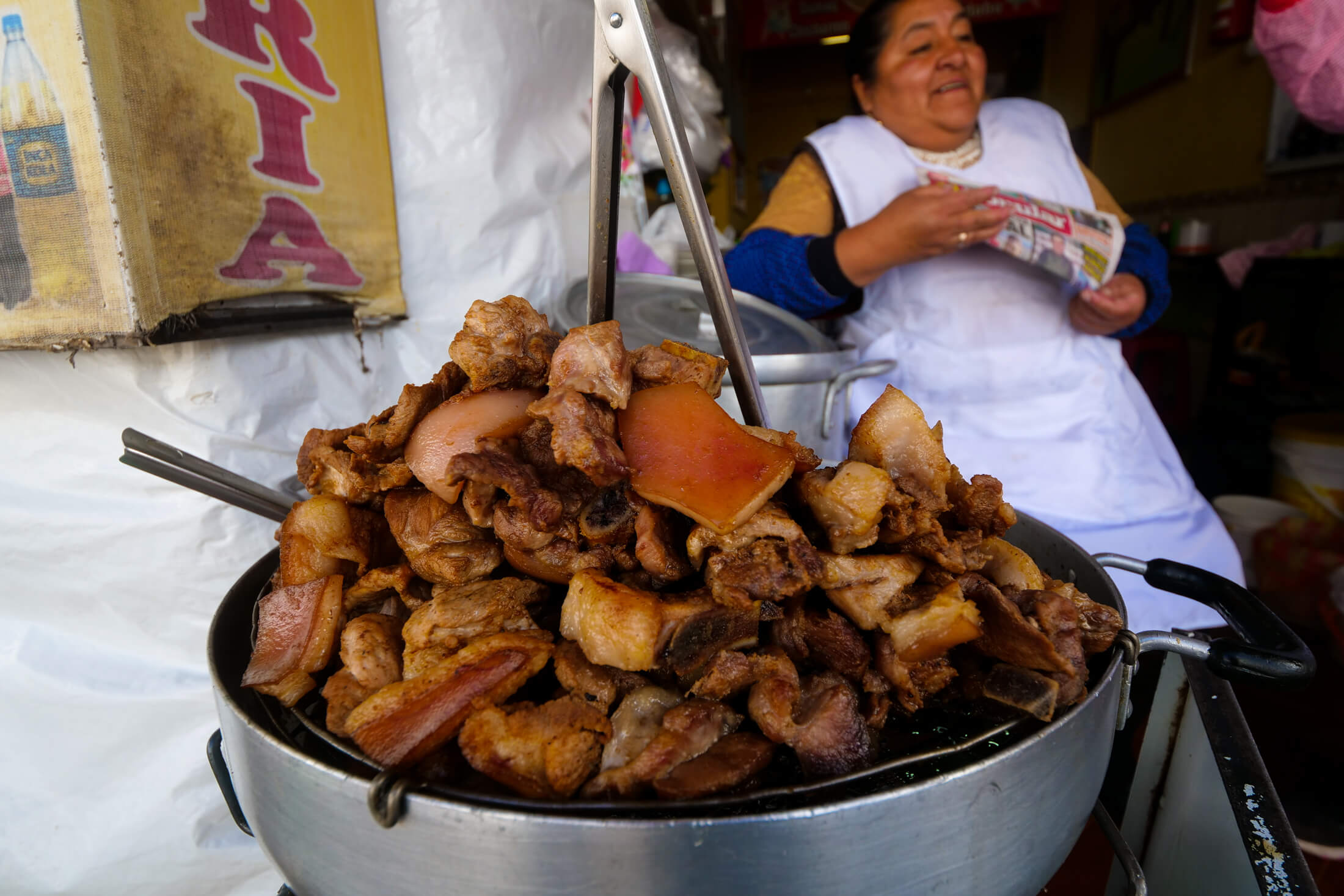
Chicharrone (Your Reward and Prize)
When you’re in Cusco, and you say the words ‘best single item of street food,’ there’s really only one thing that comes to mind.
Its finally time for a Chicharrone.
Coming to the end of this Ultimate food tour of Cusco food tour, it’s understandable if you’re getting a little full.
No matter how tight your stomach is though, I guarantee you’ll still be hungry when you’re standing in front of this trophy – your victory plate of Chicharrone.
Leaving Nothing to Chance
Arriving at the final stop, you might even be just as happy as you were 10 hours ago (if so, then we understand each other on a special level).
But if you need to leave yourself a little incentive to make it through – and that’s totally ok – here’s a tip before we dig in;
Some safeguards may be in order, so as not to leave anything up to chance, there’s no excuses like saying that you’ll “have to come back for it another day,” (as this may be your one and only time ever in Cusco)
One strategy might be that you pick one of the best items on the list, and leave this till the end. It’s like a trophy, like a personal reward, a (meaty) treat awaiting at your victory line.

Its All that Pork Can Be…
Walking just a few hundred meters down from the San Pedro market (map info down below), its finally time for one of the meatiest items on the entire Cusco street food menu.
Chicharrone is what happens when pork lovers get together to dream – this is a recipe that truly makes pork into all that pork can be.
Full Selection of All Things Porky
I’m laughing, and my hands are even a bit unsteady, when gazing at this mound of deep-frying pork parts.
Looking up ‘chicharrones’ online, in English it translates to ‘pork cracklings.’
Obviously chefs in Cusco pay no attention to this, as there might be most of an entire pig deep draining in the massive oil tray in front.
Order one plate, and you should get a full selection of porky parts. There will be skin, ribs, pork back fat, and even chunks of pork chop meat as well.
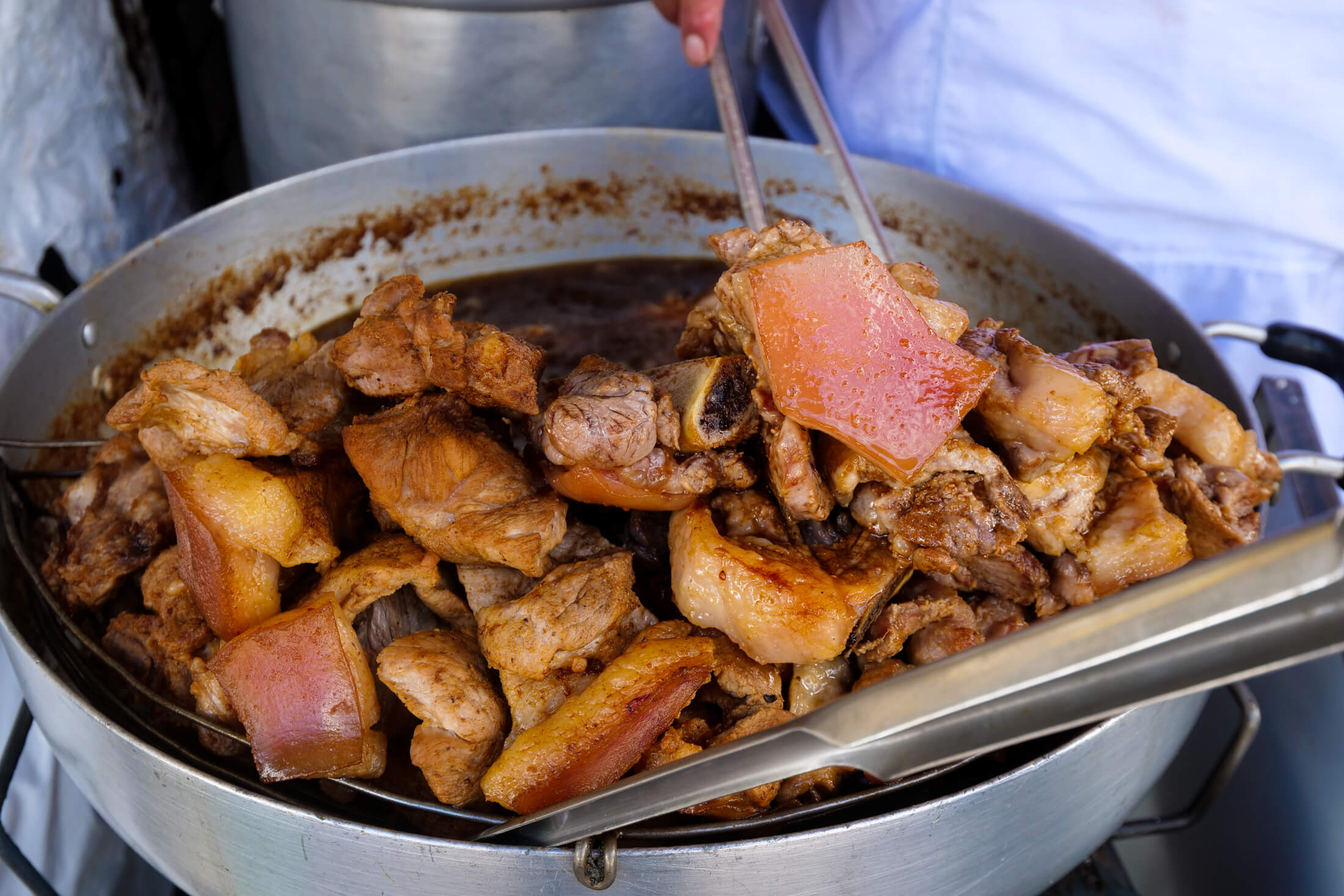
These are NOT your average ‘Cracklings’
Your order will come with some huge chunks of potatoes as well, and your porky selections balance on top of a small mound of choclo giant white corn kernels.
There are actually vegetables somewhere under that pork as well, a nice gesture to health, the chef includes a few sprigs of mint and long thin slices of red onions.
A True Understanding of Pig
The sheer meatiness of the bites of pork plus pork skin is enough to make any meat lover cry. Chase each bite with some red onion, and a few monster kernels of choclo corn.
The potatoes that come with it even taste porky as well, and they’re so thick and starchy that you’ll need the extra pork fat to help it all go down.
I thought I knew about pork before I came to South America, but this… This is truly pork understanding that’s on another level in Cusco.
Finish Each Day with Street Food
This restaurant is absolutely glorious, and finishing the tour today with chicharrone is definitely the right thing to do. Los Ricos Chicharrone is an incredible place, even worth a visit on its own if you’re anywhere near Cusco.
Name: Los Ricos Chicharrones (not on Google, I put the GPS coordinates on Google Maps)
Hours: No listing, we went there at around 4pm
Price: 10 PEN per plate (US$3)
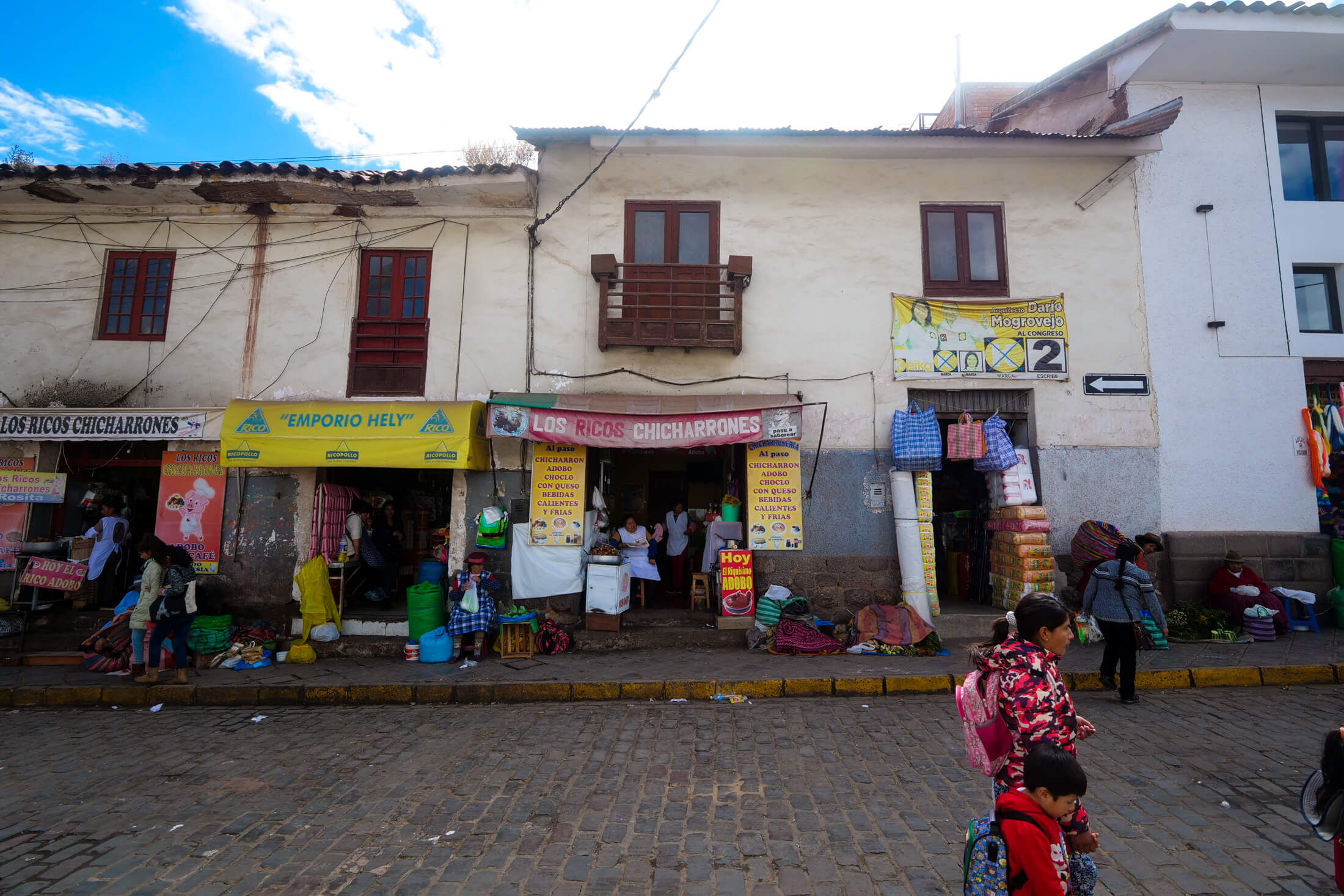
Final Comments
I do not claim to know too much about Chicharrone, but inside the restaurant I notice there is a sign that might indicate the style of cooking at Los Ricos Chicharrone is unique to Cusco, or at least unique to this area of Peru.
Therefore its obvious how there are still many more reasons to return to Cusco, there is just an incredible amount of local food here to explore.
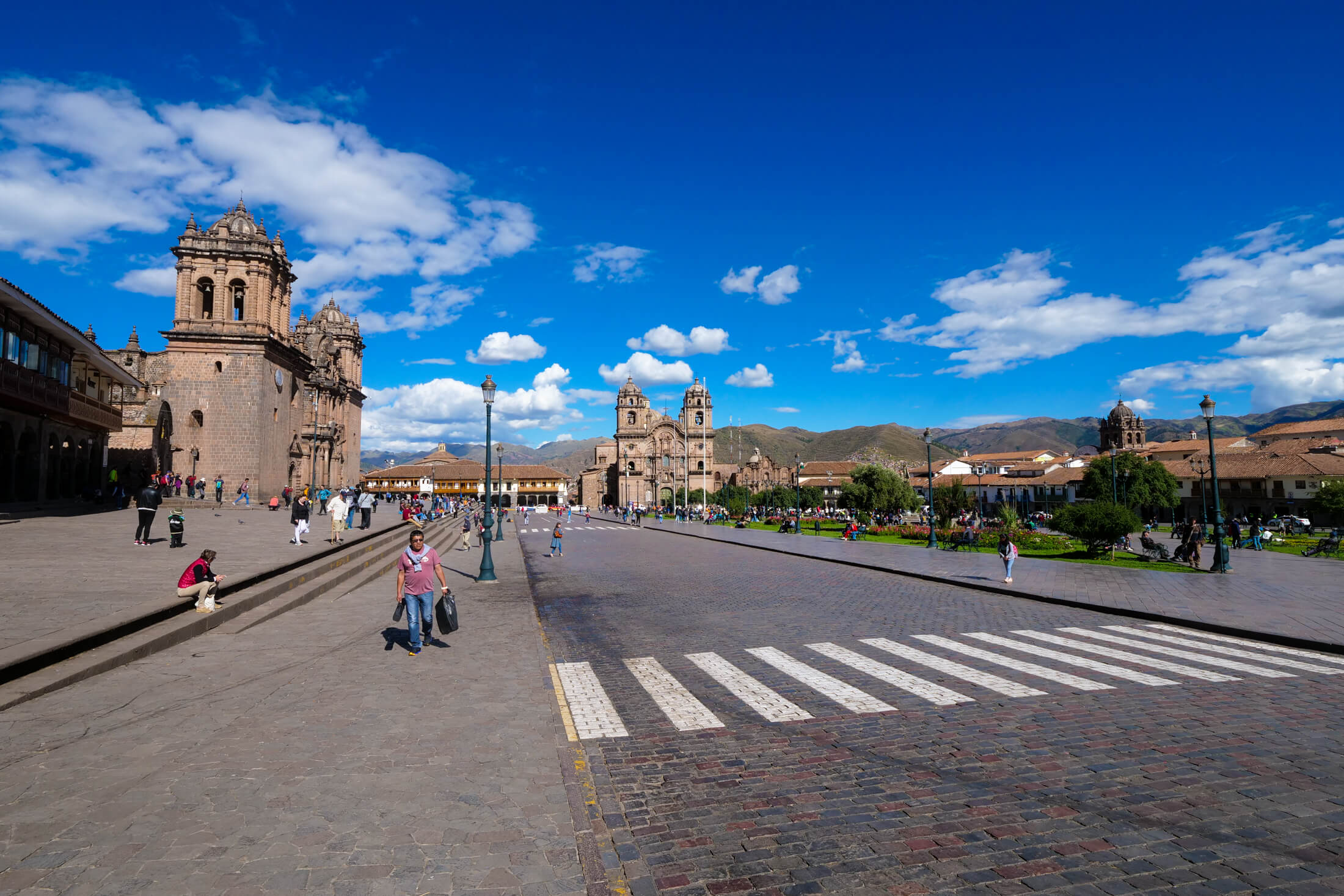
Walking Away in a Daze
Literally walking away in a daze, tapping out after an incredible final Cusco meal, we say goodbye to our friend and driver Raul, and make our way to Plaza de Armas.
A place that you can easily find yourself gravitating to, really every day you’re in Cusco, I’m happy to note that Plaza de Armas is the second place we’ve seen on this trip that has a mention in the Atlas Obcsura (in Rio de Janeiro, Brazil we went to see the Selaron Steps (link here).
A huge central square full of beautiful architecture, I think this is also one of the best places in town to just sit down and enjoy the incredibly blue shade of the Cusco sky.
Thank you for a beautiful and delicious day Cusco, hope to see you again.
Get exclusive updates
Enter your email and I'll send you the best travel food content.
